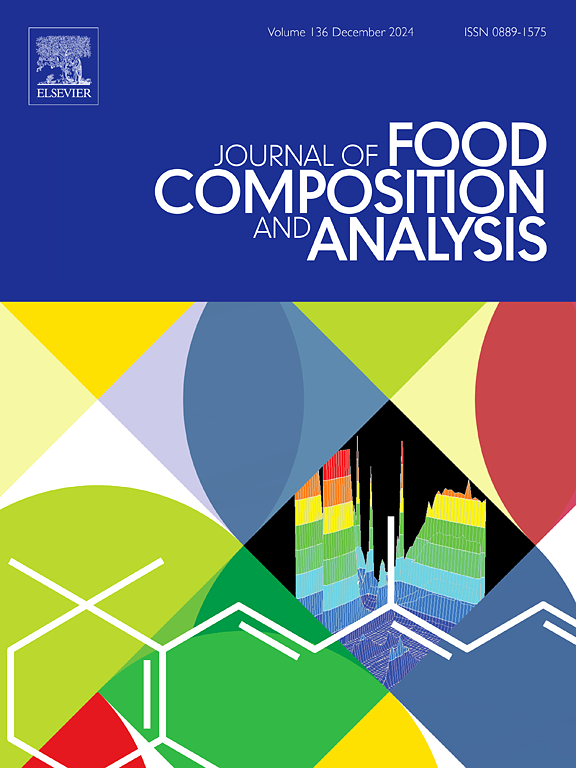Deep eutectic solvent-modified multi-walled carbon nanotubes as QuEChERS adsorbents coupled with gas chromatography-mass spectrometry for the determination of pesticide residues in Lycium barbarum
IF 4
2区 农林科学
Q2 CHEMISTRY, APPLIED
引用次数: 0
Abstract
The objective of this study was to establish a methodology for determining the residue concentrations of 13 pesticides in Lycium barbarum extract. To eliminate interfering substances in the matrix, deep eutectic solvent-functionalized Multi-Walled Carbon Nanotube (DES@MWCNT) was prepared. DES@MWCNT was firstly introduced as the sole purification agents, replacing PSA and C18 in QuEChERS extraction. Pesticide analysis was achieved using the quick, easy, cheap, effective, rugged, safe (QuEChERS) method in combination with gas chromatography-mass spectrometry (GC-MS) analysis. Unlike traditional QuEChERS, this method employs only a single adsorbent, DES@MWCNT, to replace the combined effect of multiple adsorbents, thereby enhancing the simplicity and generality of the method. Results indicated that DES-5@MWCNT effectively functioned as QuEChERS clean-up materials, significantly reducing the matrix effect to the range of −9.27–12.59 % after cleanup treatment. The concentrations and peak areas of pesticides exhibited strong linearity, with a correlation coefficient (R2) of ≥ 0.99. The limits of detection (LOD) and quantification (LOQ) ranged from 0.87 to 11.05 μg/kg and 2.89–36.83 μg/kg, respectively. Accuracy was between 79.3 % and 105.6 %, with relative standard deviations (RSDs) ranging from 2.6 % to 17.9 %. The DES@MWCNT-based QuEChERS treatment is expected to have broad practical applicability for other pesticide targets and various sample matrices.
求助全文
约1分钟内获得全文
求助全文
来源期刊

Journal of Food Composition and Analysis
工程技术-食品科技
CiteScore
6.20
自引率
11.60%
发文量
601
审稿时长
53 days
期刊介绍:
The Journal of Food Composition and Analysis publishes manuscripts on scientific aspects of data on the chemical composition of human foods, with particular emphasis on actual data on composition of foods; analytical methods; studies on the manipulation, storage, distribution and use of food composition data; and studies on the statistics, use and distribution of such data and data systems. The Journal''s basis is nutrient composition, with increasing emphasis on bioactive non-nutrient and anti-nutrient components. Papers must provide sufficient description of the food samples, analytical methods, quality control procedures and statistical treatments of the data to permit the end users of the food composition data to evaluate the appropriateness of such data in their projects.
The Journal does not publish papers on: microbiological compounds; sensory quality; aromatics/volatiles in food and wine; essential oils; organoleptic characteristics of food; physical properties; or clinical papers and pharmacology-related papers.
 求助内容:
求助内容: 应助结果提醒方式:
应助结果提醒方式:


